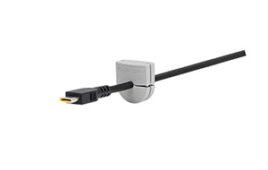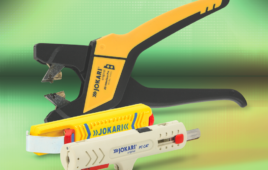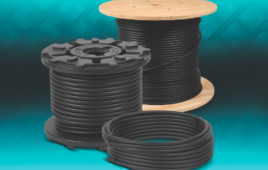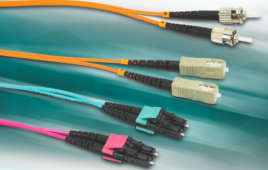
Ultrasonically welding the cable duct cover eliminated unwanted noises resulting from friction between plastic shells.
A French automotive supplier needed a cable duct to cover an FPC (Flexible Printed Circuit), which supplied the electrical functions of console lighting, rain sensor and headlamp dipping in a vehicle’s rearview mirror through the main wiring loom in the headliner. The cable duct, comprised of an upper and lower shell, was necessary because the vehicle had an extended windscreen and hence a shortened ceiling headliner. This meant that the FPC required sheathing on optical grounds alone. The cable duct was visible as it bridged the A-zone from the headliner, via the windscreen, to the rearview mirror.
Originally, the shells were to be clipped together mechanically in order to absorb the potentially high temperature fluctuations around the windscreen. The product was then not stiff enough, and undesirable noises resulted from the friction between the two shells as it vibrated and twisted. For this reason, the manufacturers considered what could be done to improve the product and process. Welding the two shells together ultrasonically to form a stable cable channel seemed to be an appropriate solution.
Through the application of ultrasonic vibrations, it is possible to achieve a high-strength, gas-tight and watertight connection within milliseconds, which looks good and does not contain any additives. In addition to this, material changes in injection moldings, such as moisture content and size deviations, can be balanced out. The low energy requirement means that the parts are subject to virtually no thermal stressing.
Rigid, amorphous plastics, such as PC, PS, ABS, SAN and PMMA, have highly favorable transmission properties for ultrasonic waves. Semi-crystalline plastics, such as PA, POM, PP and PE, are best welded in the direct near field of the sonotrode. The joined parts can always be machined straight away, which means that ultrasonic welding can be integrated in automation lines without any problems. Ultrasonics can be used to weld, form, embed, secure and rivet automotive parts. Applications extend from the instrument carrier, via the sunblind, right through to the brand emblem on the key.
The two cable duct shells were re-designed, requiring a change in the injection mold. The clip hooks and clip eyes, which involved a high outlay in terms of mold technology, were no longer necessary; instead, the part was given a so-called energy director in the form of a stepped weld, suitably tailored to ultrasonic welding. This ensured optimum strength, invisible melt encapsulation and good component guidance during production. The new injection mold was considerably cheaper than the originally planned mold on account of the simpler shape of the part.

Duct cover shells designed for ultrasonic welding were less complex and thus cheaper to produce.
Both the bottom and top shell had grained surfaces. This grained surface structure had to be protected throughout the whole process. Appropriate measures had to be taken for the holding device for the bottom shell as well as for the contact surfaces between the upper shell and the welding sonotrodes without impairing the welding quality.
A soundproofed special machine with two sonotrodes and two feed units fulfilled the requirements. Polished brass component holders ensured that no marks were left on the bottom shell. An automated film indexer that pulled a fresh piece of film over the part for each welding operation, ensured the integrity of the top shell. The sonotrode thus only had indirect contact with the part – and the grained surface remained intact while welding was taking place. The machine fulfilled the specified process capability characteristics straight away, and the cmk value of 6.503 stood out particularly positively compared with the specified value of 2.33. The result was a product that is running successfully in two-shift serial production, six days a week – with a life cycle of 250,000 articles.
Herrmann Ultrasonics
www.herrmannultrasonics.com
Filed Under: Cables + cable management





Tell Us What You Think!